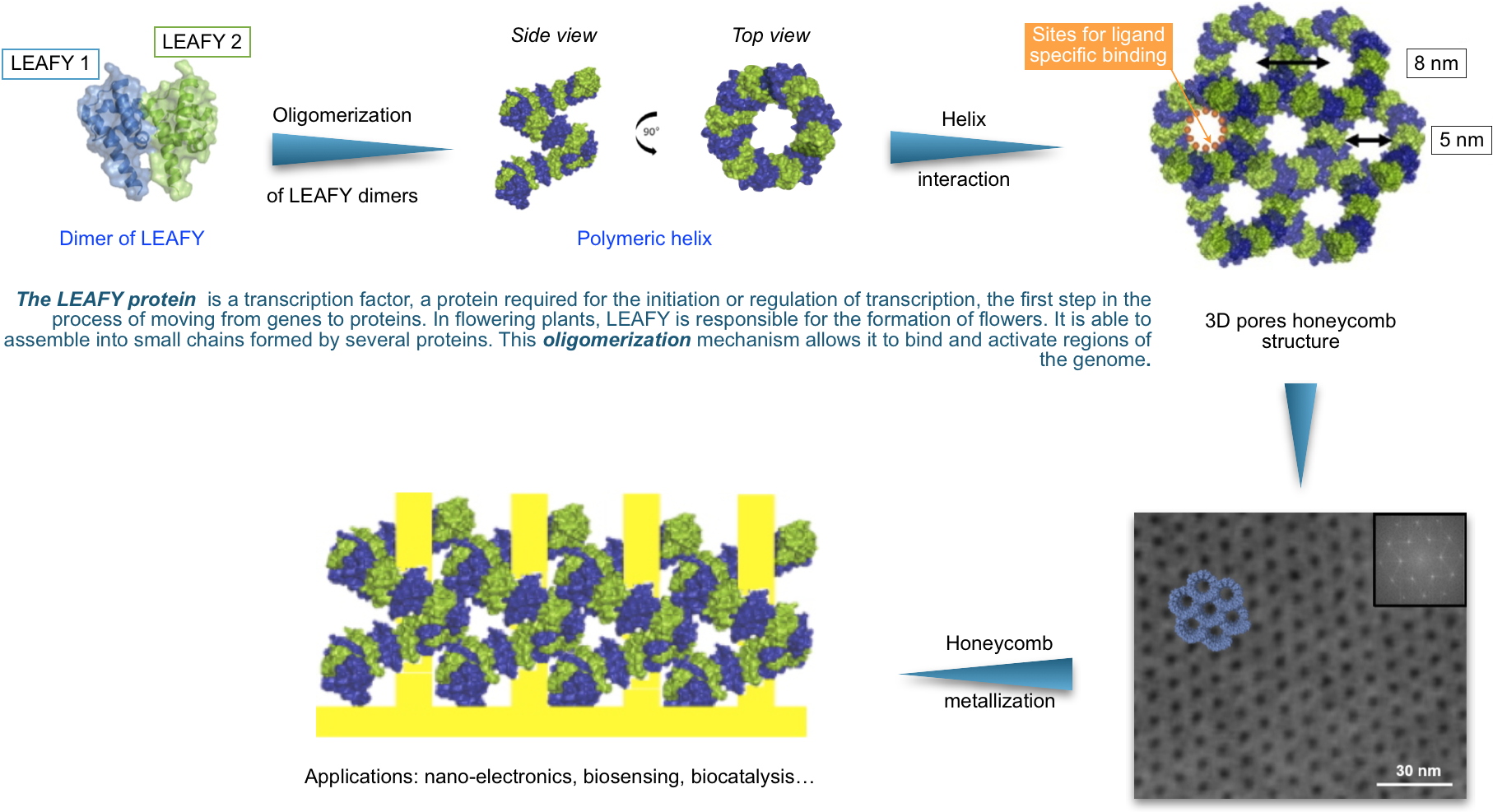The organization of matter at the nanometric scale has a strong influence on its properties. For example, the race for performance of electronic chips, thanks to the miniaturization of transistors and the increase in their density, has allowed a reduction in power consumption while increasing the computing power of microprocessors. These advances in microelectronics, due to the organization of matter on a nanometric scale, can be applied to many other fields such as batteries, photovoltaic panels, biosensors, etc.
Nano-organization of matter can be achieved using two types of approaches. The first approach, called "top-down", is the most widespread. It consists of taking a solid block of material and carving it as finely as possible, just as a block of stone would be carved by an artist. With this method of engraving, it is possible to obtain patterns of about 20 nm, but it becomes very difficult to make them even smaller. The second approach, called "bottom-up," relies on the elementary assembly of atoms, like Lego™ bricks, to ultimately achieve an organized construction. This method is inspired by the molecular assemblies found in nature. However, the drawbacks of such a method lie in the difficulty of achieving multilayer assemblies and the low grafting capacity of these layers.
To overcome the drawbacks of the bottom-up approach, we are seeking to build multilayer nanostructured materials with a high grafting capacity. For this purpose, we have selected a protein from the
Ginkgo biloba tree, the
LEAFY protein. This protein has an oligomerization domain capable of naturally self-assembling in three dimensions (3D) to form helical polymers (
Figure) corresponding to the stacking of 40 protein layers. These polymers interlock to form a 3D honeycomb structure with 8 nm spaced patterns, which represents a considerable gain compared to what can be obtained by a "top-down" approach. Then, thanks to a tunable terminal extension of the oligomerization domain within each honeycomb pore, it becomes possible to form bonds with a wide variety of ligands, as nickel dots illustrated here (
Figure).
We have succeeded in developing a multilayer support in the form of functionalizable honeycombs with patterns smaller than 10 nm. The LEAFY protein can be used as a versatile platform paving the way for advanced research in biotechnology, nano electronics, biocatalysis or in the field of biosensors that were not possible with current nano materials.

Figure: Self-assembly of a new biomaterial based on the oligomerization of bio-polymers into honeycombs with sub 10 nm dimensions.
The
LEAFY protein is a transcription factor, a protein required for the initiation or regulation of transcription, the first step in the process of moving from genes to proteins. In flowering plants, LEAFY is responsible for the formation of flowers. It is able to assemble into small chains formed by several proteins. This
oligomerization mechanism allows it to bind and activate regions of the genome.